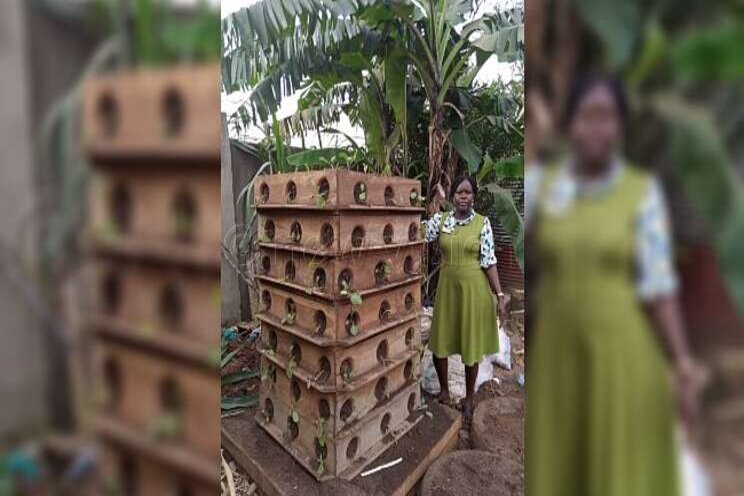Grow vegetables all year with a vertical garden
Added on 19 August 2021

As populations increase, more so, in urban areas, food demands rise significantly making it costly for low-income earners. This calls for creative solutions to the growing challenges of urbanisation. Paul Matovu, a gardening entrepreneur invented the vertical garden (farm in a box) backyard farming method.
The proprietor of Vertical and Micro gardening (VMG) says, people should maximize small spaces to grow food. "Forget sack gardens, today, these have been improved and turned into durable wooden gardens," he adds.
Catherine Nalukwago, another vertical farm innovator adds that vertical gardens allow families to grow microgreens, vegetables, and fruits in small contained spaces. They also motivate and train children to grow strawberries, herbs and spring onions. "The gardens also make urban farming a viable micro-enterprise for low-income households," she affirms.
Why you need the garden
With vertical farms, one can organically grow their own food without relying on pesticides, since the gardens are off the ground. It wards off pests infestations. But also, one should have strict control on what is allowed into the garden. This makes it easier to produce fruits and vegetables which are free of pesticides and herbicides. "Vertical gardens will give you year-round harvests," Nalukwago says, adding that, "Since the crops are grown in a controlled environment, they are able to keep growing throughout seasons."
In addition to that, vertical gardens are not susceptible to damage by flooding or the scorching sun. The farmer has full control of the environment. You just choose a conducive spot to place the garden. Matovu asserts that vertical farms use less land to grow food compared to the traditional farm. This is important to practice in and around urban settings where space is limited. This garden also inspires, motivates and trains children on how to grow and care for plants.
Cost
Matovu's empty garden costs sh260,000. But when fully planted (soil and seedlings) it goes for sh450, 000. "The box produces food worth sh1.2m every year. Therefore, the money is quickly recouped," he says.
It's a potable garden
Matovu's garden is 3ft wide and 4.5ft high, but it's scalable depending on the height of the user. It has seven trays and each can take up to 72 plants and maximum of 200. One can grow spices, fruits and vegetables like spinach, sukuma wiki, kale and tomatoes. The soil is changed between six months to two years, depending on the crops grown, but it is first tested for the amount of nutrients.

Vertical gardens are not susceptible to damage by flooding or the scorching sun.
The farm units are built of hard wood. The garden has a central vermicomposting chamber (wormery), where earthworms transform organic waste, which they consume, into natural fertiliser. This chamber then supplies the nutrients to all tiers, and allows for crops to be grown in an agro-ecological and organic system. "The worms help to compost household waste and to keep inputs low, but organic," Matovu says. Meanwhile, in a space of just one square meter, one can grow what would take three square meters of ground soil, or about 100 plants. Most importantly, the garden is portable, making it a convenient choice for permanent homeowners and tenants.
Header Photo Caption: Racheal Nandudu grows Vegetables in her vertical garden.
Source and All Photo Courtesy of Bukedde
Source: Bukedde
More news















